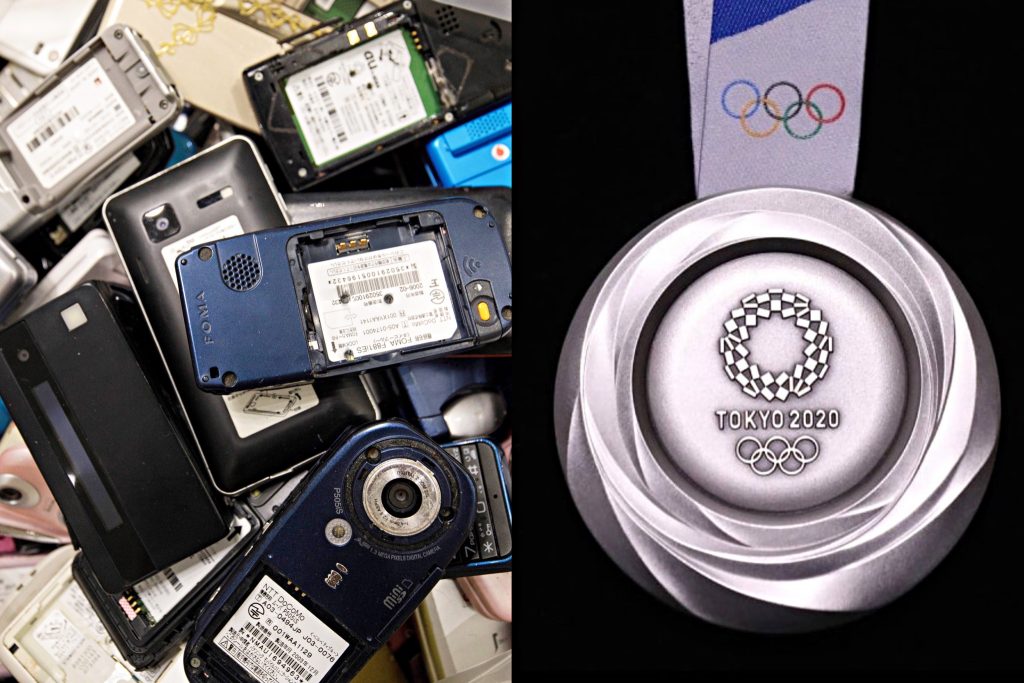
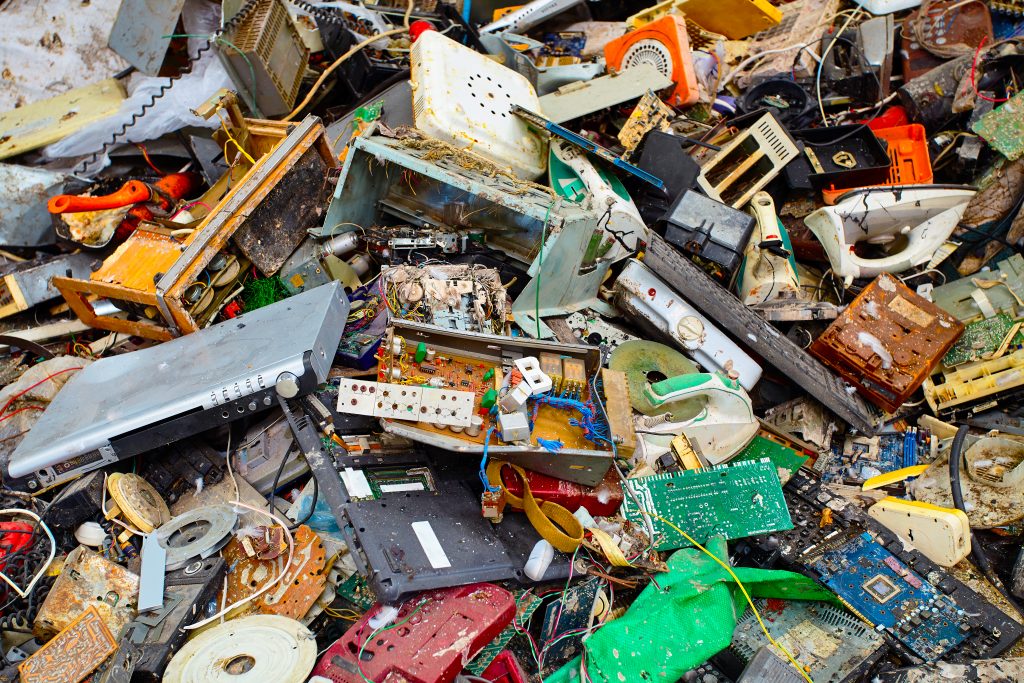
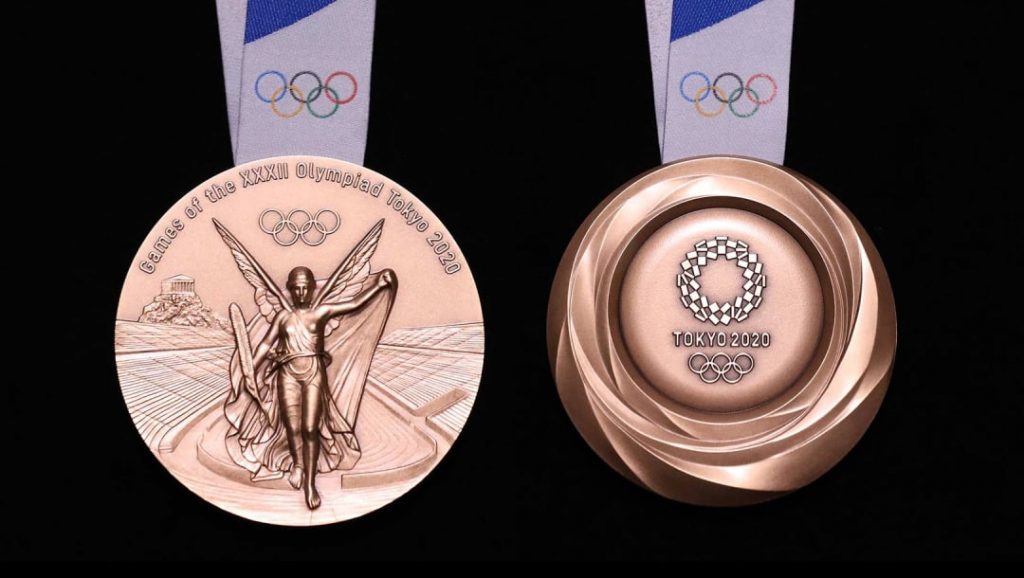
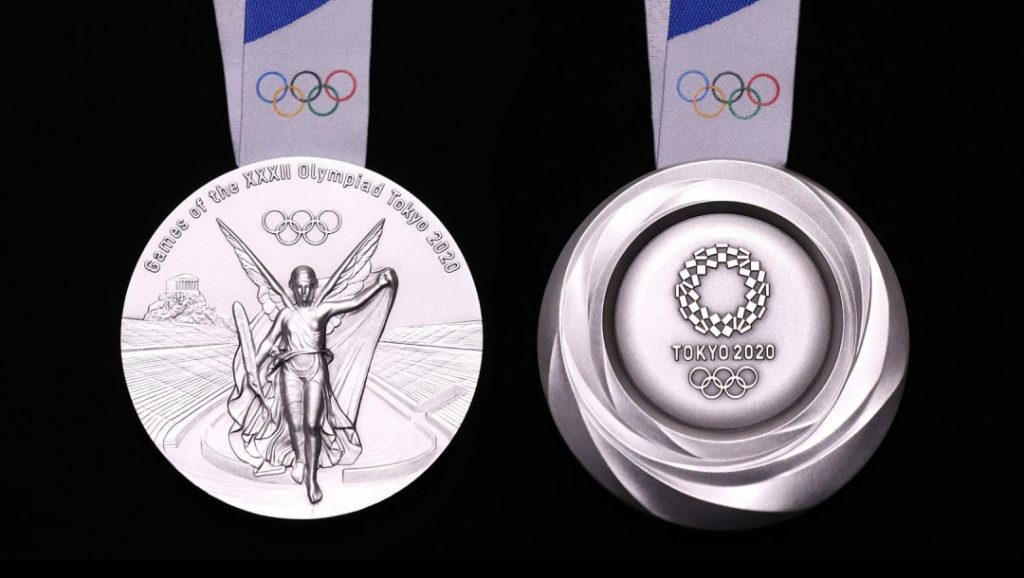
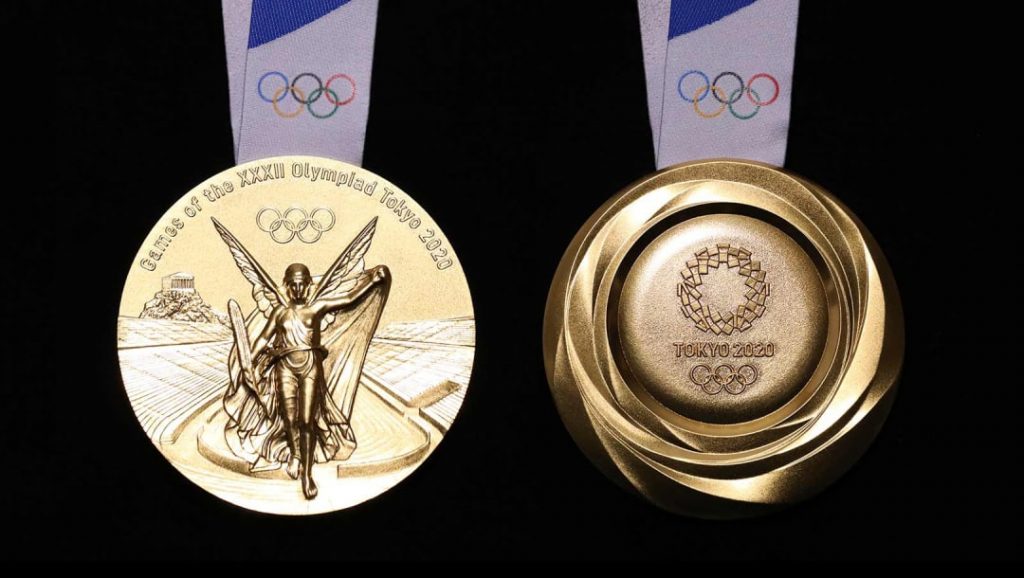
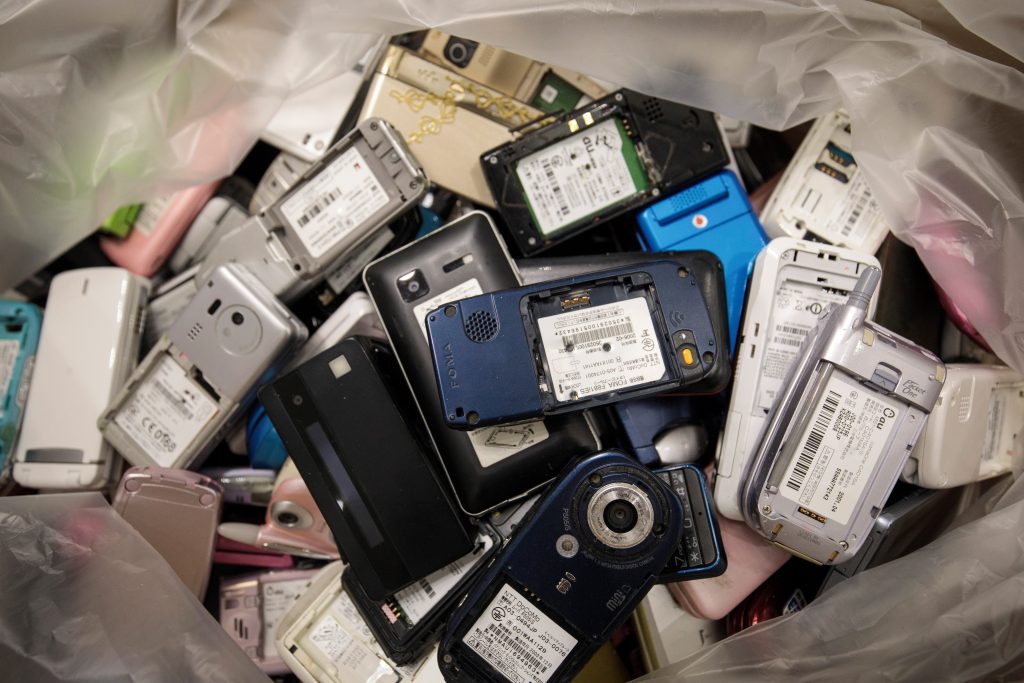
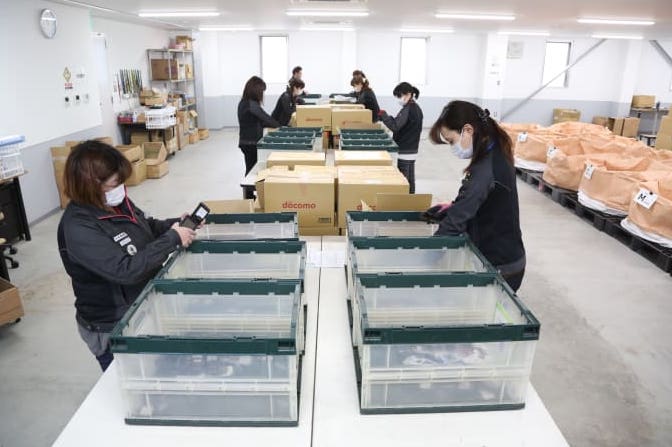







Carla Chahrour
The medals for the 2020 Tokyo Olympics will be forged from recycled electronics, including discarded smartphones, digital cameras, laptops and other devices, serving as a direct response to the world’s fastest-growing solid-waste streams: obsolete gadgets.
Traditionally, Olympic host cities have obtained the metal required to manufacture the medals from mining firms. However, Japan, which lacks its own mineral resources, has implemented the theme of a sustainable future by recovering up to eight tons of metals from obsolete electronic devices that will be converted into 5,000 Olympic and Paralympic medals, according to a press release on the Olympic Games website.
“There’s quite a limit on the resources of our earth, and so recycling these things and giving them a new use will make us all think about the environment,” Tokyo 2020 Sports Director Koji Murofushi told a news conference.
This initiative, the first of its kind for the Olympics, entitled “Tokyo 2020 Medal Project” that was first put forward by members of Japan’s Olympic organizing committee in 2016 serves as a response to the global “e-waste” crisis, which refers to discarded products with a battery or plug such as computers, mobile phones, and various forms of electric and electronic equipment that are discarded as they have ceased to be of value to their users or no longer satisfy their original purpose.
The move is also part of an effort to promote sustainability and save costs after the budget for the event ballooned to an estimated $12.6 billion, which is almost double the $7.3 billion that Tokyo said it would be spending when it won the bid in 2013.
“A project that allows the people of Japan to take part in creating the medals is really good. There’s quite a limit on the resources of our earth, and so recycling these things and giving them a new use will make us all think about the environment,” Tokyo 2020 Sports Director Koji Murofushi said in a news conference.
“Having a project that allows all the people of Japan to take part in creating the medals that will be hung around athletes’ necks is really good,” the 2004 Athens Olympics hammer throw gold medalist said, in an article by Reuters.
“It will become quite a big memory for children, who think that something they gave may have been part of creating those medals,” he added.
Officials said that in the two years between April 2017 and March 2019 they collected enough obsolete electronic devices that were donated by the general public across the country, to extract the amount of gold, silver and bronze that will be required to manufacture all the medals that will be awarded next year, while simultaneously engaging people with the formation of the event by giving them a sense of direct involvement in the Games.
The donations were facilitated through the installation of signature yellow donation boxes in post offices and on street corners all over the country. Collection boxes were also installed in the stores of telecoms firm NTT DoCoMo Inc, which partnered with the environmental firm Japan Environmental Sanitation Center for the project.
In total, the Tokyo 2020 organizing committee, along with the help provided by 90 percent of Japan’s local authorities, collected approximately 78,985 tons of junked electronic devices, 6.21 million used mobile phones collected by NTT Docomo shops across the country, 32kg of gold, 3,500kg of silver and 2,200kg of bronze by the time the collection cycle closed on 31 March 2019,” according to a press release on the Olympic Games website.
The electronic devices donated by people across Japan were then given to accredited contractors who dismantled and classified the contaminants of the electronic waste to allow smelting contractors to extract the gold, silver and bronze elements that were used to produce the medals.
Japan is amongst the top three Asian countries with the highest e-waste generation in absolute quantities, amounting to a total of 2.2 million tonnes in 2014, according to the UN’s Regional E-Waste Monitor report.
In 2011 alone, 36.39 million mobile phones were manufactured in Japan and only 7.62 million units (20.9%) were collected under the Mobile Recycling Network, which is a network of 9,000 retail outlets that collect mobile parts.
The role of electric or electronic equipment (EEE) in society is increasingly becoming an indispensable part of all sectors, ranging from communication, education security to food-supply and medicine, which is fostered by the continuous development of new products, consumer demand and the rapid obsolescence of electronics, characterized by the decreasing product lifetimes of these products. This built-in obsolescence increased the proportions of all of all units sold to replace defective appliances from 3.5 percent in 2004 to 8.3 percent in 2012, according to the report of ENDS Europe agency.
The increase in consumption of electronics, and its growing integration within major societal sectors has two major adverse ecological effects.
First, it increases greenhouse gas emissions from extensive extraction and refinement of primary raw materials , which are necessary for the production of the electronic devices.
Second, the quantity and speed of discard, which is fueled by the technology industries’ constant advancement, produces large quantities of electronic waste that usually either ends up in landfills or is incinerated landfills.
This poses severe risks to human health and the environment if not handled in an environmentally sound manner, as several toxic additives or hazardous substances such as mercury, brominated flame retardants (BFR), and chlorofluorocarbons (CFCs), or hydrochlorofluorocarbons (HCFCs) are found in many types of electronic equipment.
E-waste is often described as ‘urban mine’ due to its containment of several precious, critical, and other non- critical metals that, if recycled, can be used as secondary materials.
A 2013 EPA report revealed that “the metric ton of circuit boards can contain 40 to 800 times the amount of gold, and 30 to 40 the amount of copper mined from one metric ton of ore in the United States.”
A record 53.6 million metric tonnes (Mt) of e-waste was reported generated worldwide in 2019, up 9.2 Mt in five years, according to data by the Global E-waste Monitor 2020. The majority of this waste does not reach collection centers, either in Japan or elsewhere. The report estimates that only 17.4% of discarded electronics 17.4%, a raw material value of $10 billion USD is recovered in an environmental sound way from e-waste globally. The rest is either dumped in landfills, exported to other countries or simply forgotten in household drawers.
In Japan, most EEE products are collected and recycled under the Act on Recycling of Specified Kinds of Home Appliances and the Act on Promotion of Recycling of Small Waste Electrical and Electronic Equipment, making it one of the first countries worldwide to implement an Extended Producer Responsibility (EPR) based system for e-waste.
Despite such proactive initiatives, the amount officially recycled and treated forms a significantly small percentage of the total amount generated.
This is not the first time Olympic medals will contain recycled materials. Most recently at Rio 2016, an estimated 30% of the silver and bronze medals were wrought from recycled materials.
However, the shift towards sustainability implemented by the Tokyo Organising Committee of the Olympic and Paralympic Games is unique in that a 100% of the metals used were obtained from recycled material and it was the first time that citizens have been proactively involved in such an initiative through the donation of consumer electronics.
While the electronics collected by the Tokyo Medal Project represent less than 3% of Japan’s yearly e-waste output, which the UN estimates is at 2.2 million tonnes, the utilization of recycled material in the formation of the of the 2020 Tokyo Olympic medals acts as a testament of hope in the world’s struggle with e-waste, which is drowning cities with torrents of obsolete gadgets.
“When an athlete at Tokyo wins a medal, the weight of it will not be from the gold, silver, or bronze; it will be the weight of a nation,” said US decathlete, two-time Olympic gold medallist and world record holder Ashton Eaton in a press release on the Olympic Games website.